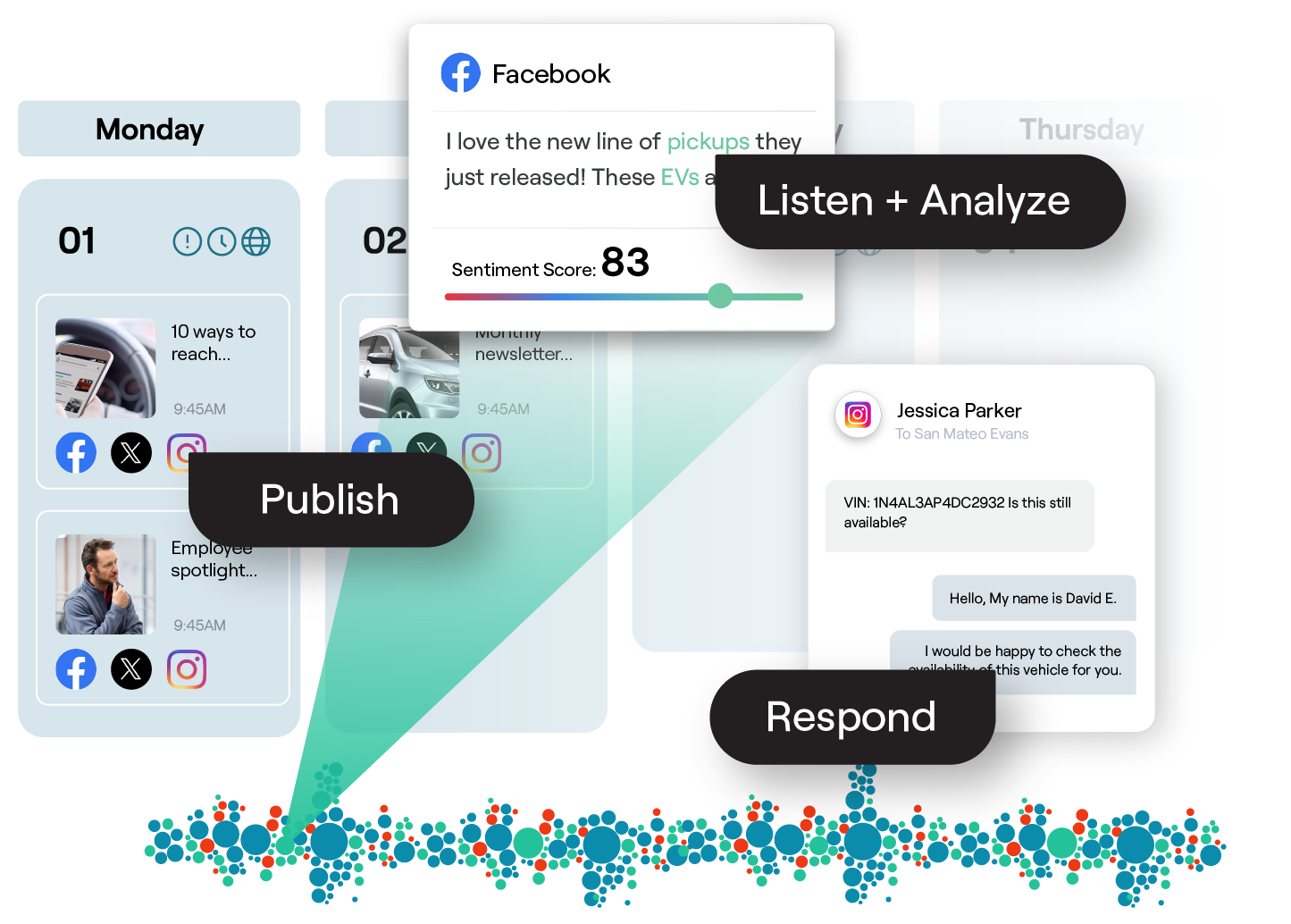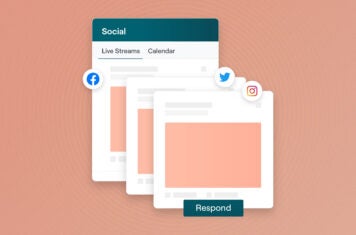Social Suite
Supercharge Your Social Marketing Program at Scale
Publish, listen and respond on the only unified platform purpose-built for location-based businesses.

Manage All Social Channels in One Platform
Gain the Competitive Advantage
Understand Brand Sentiment
Social Suite Features
Social Publishing
Tailor your posts with location-specific dynamic fields, and customize for each social network with a single click.
Foster creativity and collaboration with interactive, in-platform discussions.
Ensure your social content is on-brand and on-message with customizable approval workflows.

Social Listening
Monitor what your audiences are saying to, and about, you across thousands of digital channels.
Set alerts for real-time notification when activity happens around your brand, like mentions, trending keywords and hashtags.
Compare mentions, share of voice, reach and spread against competitors.

Social Responding
View live social content, by location or source, in a consolidated real-time feed.
Nurture your community by engaging with their posts and responding to their comments.
Monitor time to respond, response rate, and average time to close to improve follow-through and customer resolution.
Social Insights
Gauge post performance across all channels with real-time location-level data.
Measure the impact of marketing campaigns with rich visualizations and real-time insights.
Customize dashboards & automate reports to share actionable insights with key stakeholders.

Your customers are talking, but are you really listening?









